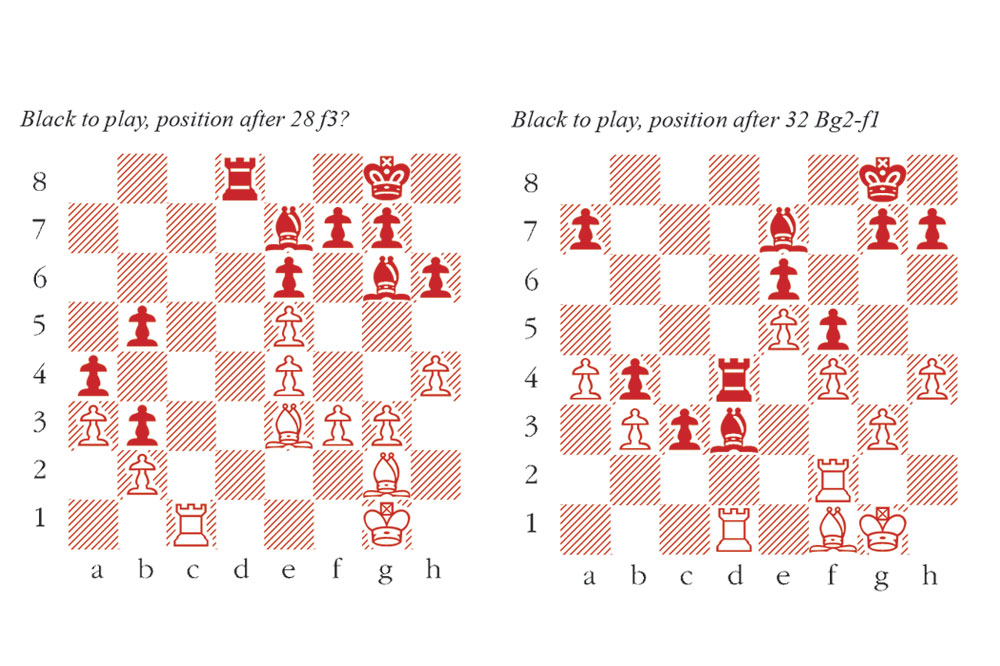Promoting a pawn is a moonshot on the chessboard. A new queen is a literal game-changer, so when a humble pawn becomes far advanced, it is worth moving heaven and earth to get it over the line. Ditching a rook or a bishop is a small price to pay for a coronation.
One game from the World Rapid Championship, held in Samarkand in December, saw the kitchen sink hurled with enviable force. White has just played 28 f2-f3, supporting the e-pawn and thereby preparing Bg2-f1. Now the prosaic 28…b4 29 axb4 Bxb4 30 Kf2 a3 31 bxa3 Bxa3 32 Rb2 b2 33 Bf1, would give White reasonable chances of a successful defence. Iljiushenok found a far stronger breakthrough.
Teimour Radjabov-Ilia Iljiushenok
World Rapid Championship, Samarkand 2023 (see left diagram)
28…Bxa3!! 29 bxa3 b4 The crucial follow-up. White’s rook will not be able to cope with two connected passed pawns on the a and b-files. 30 Bc5 The best try, since 30…bxa3 31 Bxa3 would stop the pawns in their tracks. Rc8! The pin ensures that the b4-pawn remains immune from capture. 31 Bf1 Rxc5! White resigns since 32 Rxc5 bxa3! 33 Bd3 a2 34 Rc1 b2 wins.
Iljiushenok’s brilliancy reminded me of a famous combination, played by a young Botvinnik, almost two decades before he became world champion in 1948. Earlier in the game, Black sacrificed rook for bishop to incubate the passed pawn on c3. But the attack on the Bd3 requires an accurate response. The strongest move was 32…Bc5! with the idea 33 Bxd3 Rxd3! 34 Rxd3 c2 and the pawn cannot be stopped. A better try is 33 Rxd3 Rxf4! 34 gxf4 c2 35 Kg2 c1=Q and the new queen should hold sway over the two rooks. Botvinnik’s idea was even more beautiful, though flawed.








Comments
Join the debate for just £1 a month
Be part of the conversation with other Spectator readers by getting your first three months for £3.
UNLOCK ACCESS Just £1 a monthAlready a subscriber? Log in